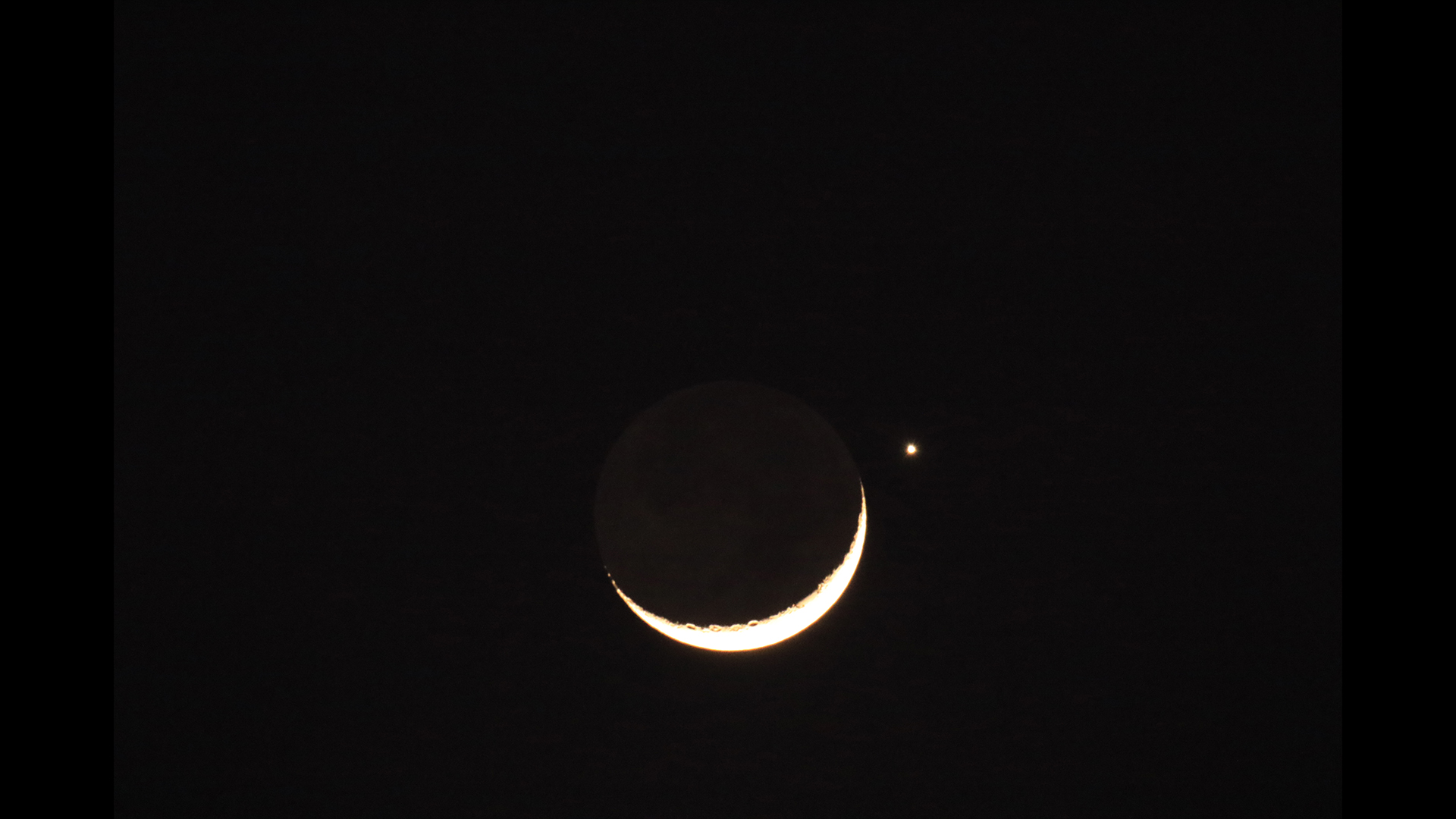
If you're willing to get up early this Thursday (Nov. 9), you can catch one of the most delightful celestial sights of the year: the crescent moon "smiling" at Venus.
During this close conjunction, the moon, arguably in its most delicate and beautiful phase of the month, will appear close to a very bright Venus but will be oriented so it resembles a smiley face.
However, you'll have to rise early; it will be visible in the eastern sky starting at about 3 a.m. across North America. There will be around a two-hour window to see the moon and Venus before sunrise, with the pair climbing higher into the east-southeastern predawn sky.
The moon, in its waning crescent phase, will be just 15% lit during the event. Just 1 degree — about the width of an outstretched finger — to its upper right will be Venus, shining at a brilliant magnitude of -4.3. (Lower magnitudes are brighter.) These, the second and third brightest objects in the sky after the sun, will be easy to see with the naked eye, though a pair of good binoculars will reveal details on the lunar surface.
The duo will be so close that they'll fit in the same field of view in a small telescope, according to Live Science's sister site Space.com.
You'll probably notice that the unlit portion of the moon — in this case, the other 85% — is also slightly illuminated. That's "Earthshine," the sun's light reflected off Earth's clouds and ice caps back onto the moon, which partly illuminates its night side.
For North America, this brilliant meet-up is set to be merely a lovely conjunction. However, from a narrow path across some of the planet, it will be possible to see Venus briefly disappear behind the moon. That so-called occultation is possible because the moon is so close to Earth that its position in the sky varies by up to 2 degrees worldwide, according to In-the-sky.org.
The path of visibility for the occultation will lie across parts of Greenland, Iceland, Svalbard (Norway), Europe (not including Spain and Portugal), western Russia and central northern Africa. However, for some observers, the occultation will occur during daylight, so viewers there will need a telescope to see this game of celestial hide-and-seek.







